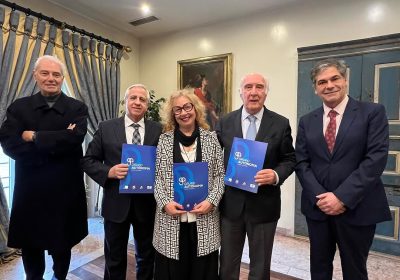The Directorate-General for Consumer Affairs (DGC) and the Directorate-General for Health (DGS) launched last Friday, October 25, the “Guide for Digital Influencers and Advertisers”, a tool that provides various information on the rules and good practices in the commercial communication of breast milk substitutes and food for babies and young children in the digital environment.
The guide provides information on current national legislation specific to this topic, as well as a set of good practices aligned with the recommendations of the World Health Organization (WHO), namely the International Code of Marketing of Breast-milk Substitutes. The document provides clear recommendations on what is and what is not permitted, particularly with regard to the promotion of breast-milk substitutes and baby food. The aim of this guide is to ensure that those communicating in a digital environment can ensure that their content is in line with the principles of promoting healthy eating, but also complies with legal standards, ensuring responsible communication in line with Portuguese legislation.
Despite current evidence on the benefits of breastfeeding, in Portugal only 221% of children are exclusively breastfed up to six months and 12.9% of babies have never received breast milk. The marketing of breast milk substitutes and foods for babies and young children, including the information on food labels, has been identified as one of the determining factors for the low prevalence of breastfeeding.
In addition to the importance of breast milk, the foods introduced during the diversification phase and the food consumption patterns during the first thousand days of life are equally decisive for the acquisition of healthy eating habits and for the metabolic programming that determines the burden of disease throughout life.
The results of a pioneering study carried out in Portugal by the DGS suggest that Portuguese pregnant women and mothers of young children are exposed to multiple advertisements for breast milk substitutes and complementary feeding products, while using different social platforms in the digital environment. The analysis of direct exposure of women and mothers found that 74% of foods for infants and young children do not meet the requirements of the WHO Nutrient Profile and Promotion Model and that all of them feature at least one nutritional and/or health claim or other information on the packaging.
The preparation of this Guide is also a reflection of the solid and dynamic partnership between the DGC and the DGS, which will continue on health and consumption issues, aiming to strengthen the capacity of all economic operators, namely digital influencers, and materializing the constitutional purpose of both entities.


 Protocol signed between the National Federation of Conflict Mediation, the UAL Arbitration Center and the Autonomous Group/>
Protocol signed between the National Federation of Conflict Mediation, the UAL Arbitration Center and the Autonomous Group/>  Awareness campaign for elderly consumers/>
Awareness campaign for elderly consumers/>  Insurance and Pension Funds Supervisory Authority launches Public Consultation on the differentiation between health insurance and health plans/>
Insurance and Pension Funds Supervisory Authority launches Public Consultation on the differentiation between health insurance and health plans/>